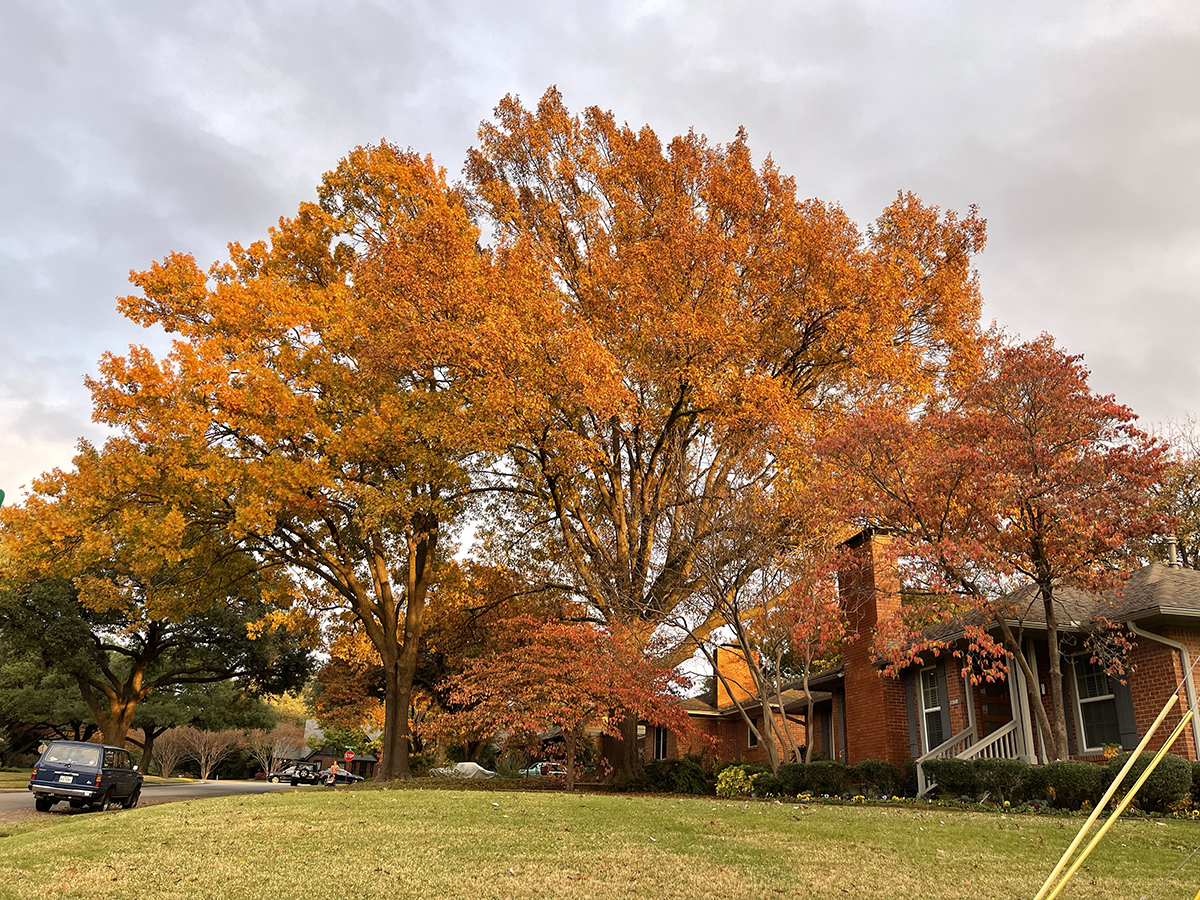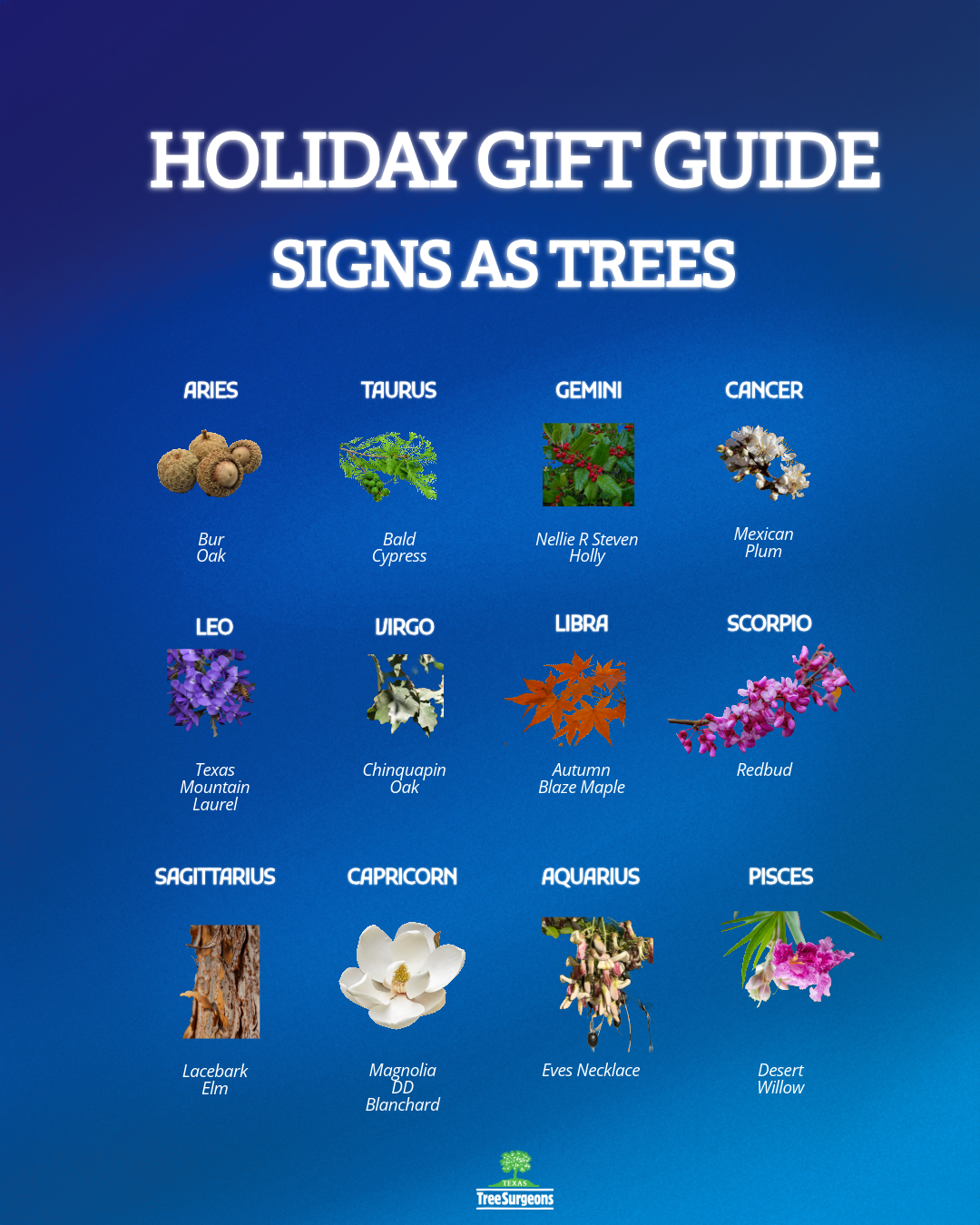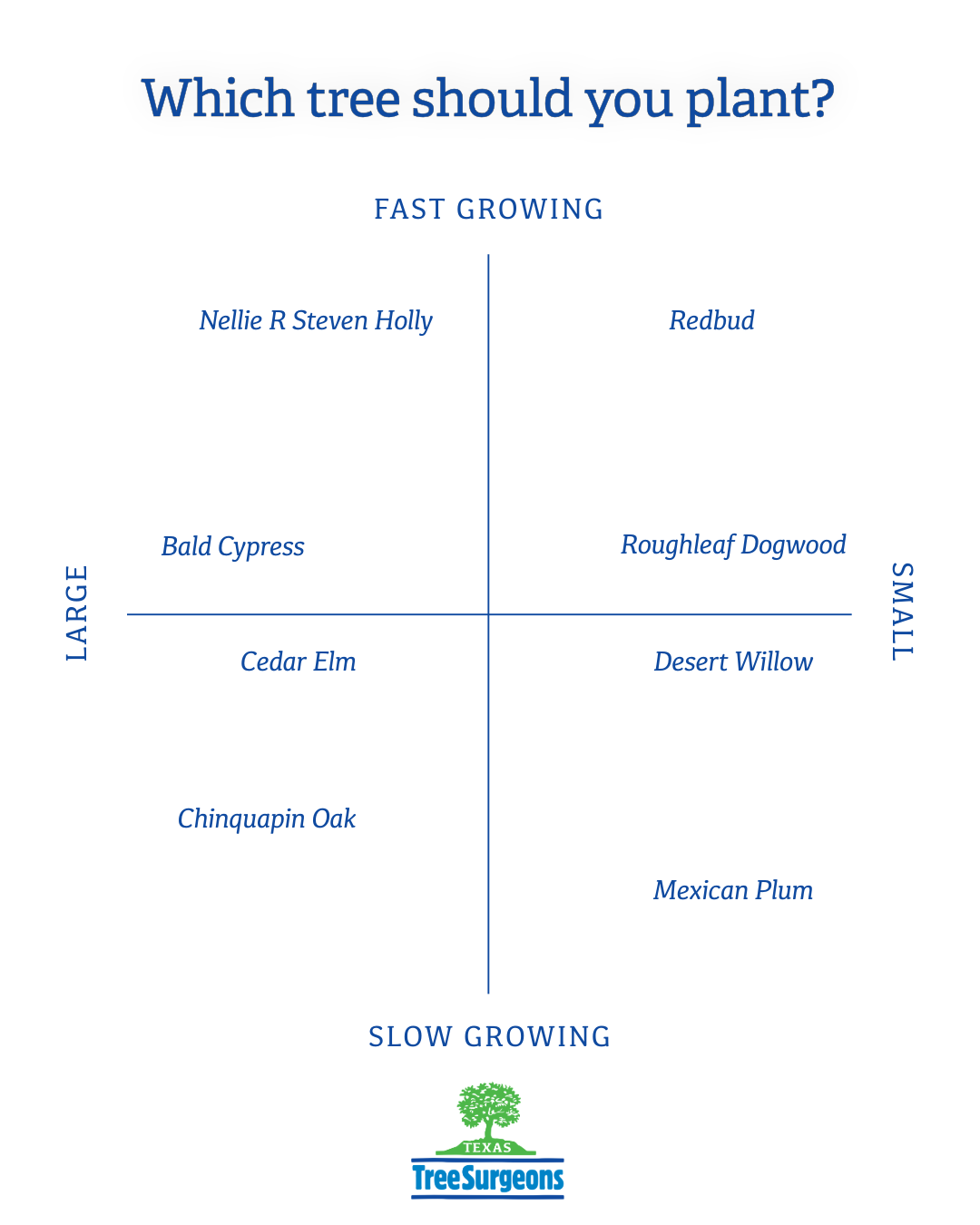Can Christmas Trees Grow in North Texas?

While Christmas tree farms are not a common sight around North Texas, and many traditional evergreen trees do not thrive in our urban forest, there are several native evergreen species that can be used to give your yard some year-round color. Additionally, we’ll mention some introduced species that are popular, but don’t always do well in our environment.
Native Texas Evergreens
-
Eastern Redcedar
The eastern redcedar is the closest thing we have to a native Christmas tree in North Texas. With many different cultivars and growing patterns, the eastern redcedar can be a large shrub with a conical shape or be allowed to grow into a larger shade tree. Hardy in a wide range of soils, the eastern redcedar can survive both our sweltering summers and freezing winters. Some people are allergic to eastern redcedar, so it is, unfortunately, not the best choice for every situation. But if you are looking for a live Christmas tree to adorn your yard, eastern redcedar is your best bet.


-
Nellie R. Stevens Holly
There are a wide variety of hollies that are native to Texas, but perhaps the most classically “holly-like” is the Nellie R. Stevens holly. This versatile shrub can grow to as much as 30 feet tall, or be regularly trimmed for a low hedge. The Nellie R. Stevens holly features deep green, glossy foliage and the female specimens produce bright red berries. If you want a winter classic that looks marvelous against snow (when we get snow), the Nellie R. Stevens holly is perfect. Plus, the branches, leaves, and berries can be harvested to make great additions to holiday decor.
-
Yaupon Holly
The yaupon holly doesn’t have quite the traditional holly features of other species, but still features green leaves and red berries. In North Texas, yaupons are more often seem as small ornamental trees, rather than in a hedge, as they have smaller leaves than other shrubs, and can sometimes appear uneven. Different varieties of yaupon have been bred for various landscape uses, including a visually-striking “weeping” cultivar. While the leaves and branches may not be as suitable for holiday decor, the leaves can be brewed into a strong tea that has nearly as much caffeine as coffee. Avoid eating the berries, however, which are mildly toxic.


-
Magnolia
Magnolias are not often thought of around Christmas, but these southern staples are some of the most common evergreens in the area. Magnolias can range in size from majestic, 40-foot-tall examples, with foliage draping the trunk all the way to the ground, to small cultivars that can be used as shrubs. While magnolias are generally well-suited to North Texas, to really thrive, some varieties need extra care. With their large leaves, magnolias can also cause quite a mess during leaf exchange. Still, it is hard to go wrong with magnolias, which is why they are a Texas classic.
Introduced Evergreens
-
Pines (Afghan/Eldarica, Austrian, Japanese)
While there are pine trees native to Texas, they are found in different ecoregions, and are not naturally features of our North Texas blackland prairie. Still, some pine species have been imported to the area, with varying success. Most pines prefer dry, sandy, or rocky soils over the denser, clay-heavy soil of North Texas. A lack of proper drainage can lead to moisture retention in the soil, which can cause some species of pine to develop fungal infestations. With proper monitoring, pines can be cultivated in North Texas, but they rarely thrive, and may be more suited to shrub or ornamental usage.
-
Italian Cypress and Junipers
Once a ubiquitous feature of North Texas landscaping, Italian cypresses and their cousins in the juniper family have developed many health issues in the past few years. Like pines, Italian cypresses are well-suited to sandy, rocky, dry soil, and need proper drainage. This makes them drought-tolerant, and ideal for their Mediterranean home, but also leads to high susceptibility to fungal issues. With high rainfall, cypresses and junipers can develop fungal cankers and brown out quickly. Because of the presence of the responsible fungi in the natural environment, treatment is often ineffective. If you have Italian cypresses or similar species, and have been noticing a decline, it may be time to consider replacing them with evergreens better-suited to our environment.
At Texas Tree Surgeons, we love trees (evergreen or not) and we love our customers! There are other native Texas trees that are evergreen, such as the Texas mountain laurel and our local favorite live oak, but we thought these would be a good place to start if you are looking for some winter color as a gift or want some landscaping ideas. As always, we are happy to have one of our certified arborists discuss which evergreen would be best-suited for your particular needs. Don’t hesitate to get in touch with those or any other questions you may have, and we hope this holiday season and the year to come are filled with joy for you and your loved ones!
Related Blogs
Similar blogs related to this topic


North Texas Fall Foliage: Why Leaves Change Color
North Texas weather changes as quickly as the mood of a toddler. Oscillating from hot to cold. One thing that clearly denotes autumn in North Texas is the fall foliage. The color shift may not…
Read more

Holiday Gift Guide, Zodiac Signs as Trees
This holiday season a gift that keeps on giving in a time of over consumption is the most ethical and thoughtful gift. It is investment in a shared future that benefits their home and the…
Read more

Which Tree Should You Plant?
Tree selection needs to include a balance of preference in style with species selection that can thrive in North Texas unique soil conditions and climate. Below are some essential questions to ask yourself to ensure…
Read more
